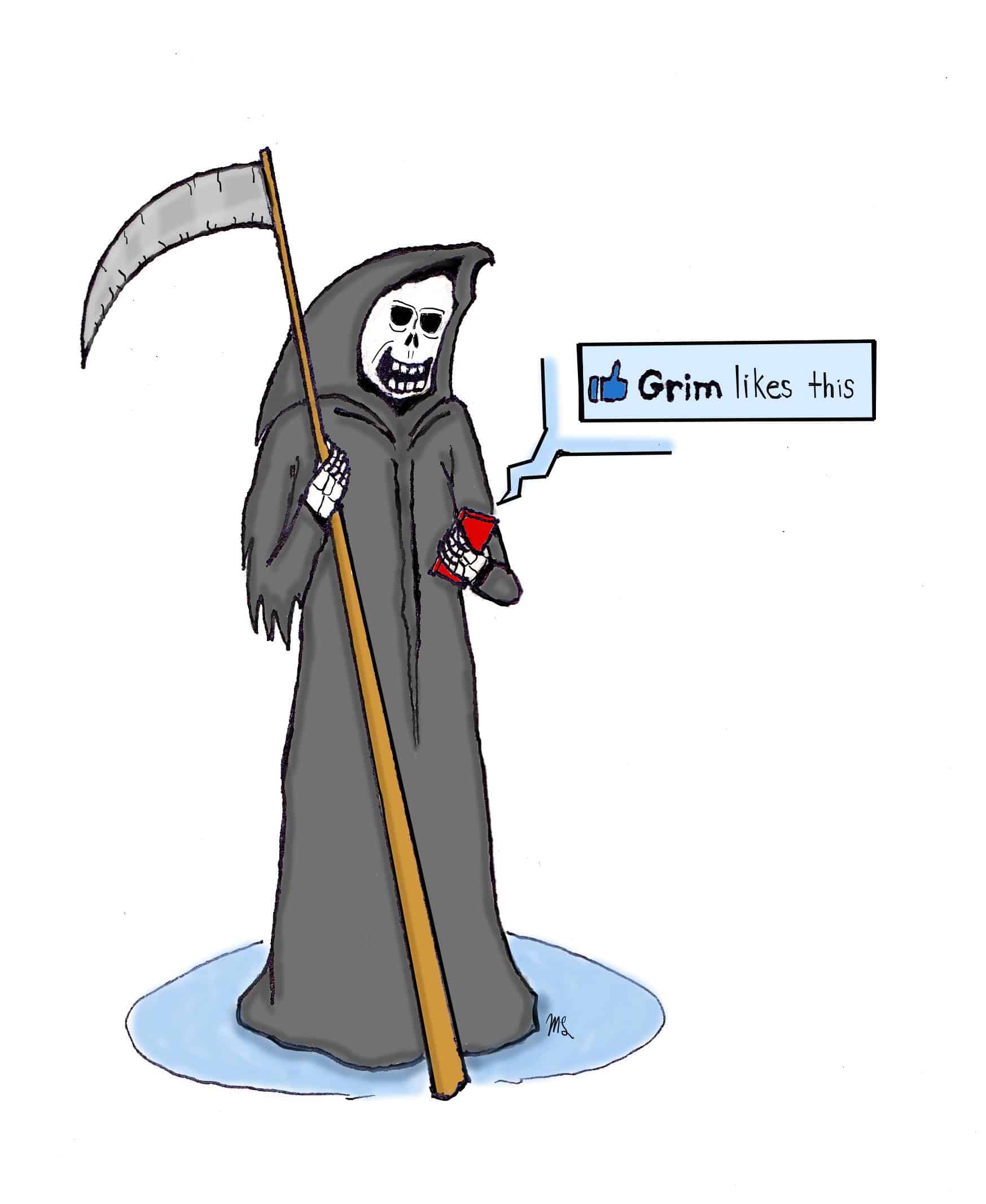[dropcap]S[/dropcap]ocial media has changed the way we deal with death and loss because individuals retain an online and digital presence, even after passing away. Social media profiles, websites, and blogs are not always taken down post-mortem, and photos and videos of the deceased continue to exist on social media forums. According to an article by The Loop, deceased Facebook users could outnumber living users by 2065.
We remain alive in some sense — on Facebook, Twitter, Instagram, or on our personal or professional blogs. There are machines that keep us alive in our final moments in hospitals, and there are other machines — laptops, computers, and mobile phones, that keep us digitally alive after that.
The way our parents and grandparents dealt with their loved ones’ deaths is so different from the way we do. Those in the older generation have little to no access to digital profiles of the people they lost. Before social media, when somebody was dead, there were only memories and maybe a few pictures, nothing more. Now, a form of interaction with the deceased can and does continue online.
It’s quite unsettling that somebody could die and people could potentially continue to visit them. This means those who have died maintain a visual, tangible presence. In addition, it has never been easier to capture and later access photos, videos, and voice recordings. Besides an online presence, we have the ability to hold onto digital memories of the deceased, and we are able to share these memories across forums.
We have an instant connection to people and events worldwide, but we are also building a legacy and memorial through our online profiles. In the past, only certain prominent people were granted legacies or memorialized, but the rise of digital technology changes that. Sometimes we record more than the significant events of our lives, as some of us also keep track of the insignificant, trivial things — where we had dinner, what movies we watch, and what memes made us laugh.
[pullquote-default]You no longer have to visit a cemetery or a place of worship — you can remember the deceased from right where you are. [/pullquote-default]
Social media outlets such as Facebook and Twitter have different policies on memorializing people online. Facebook provides several options. It allows you to request that your account be memorialized after your death, or you can have it deleted. Nobody can log into a memorialized account, but if a legacy contact exists, they can change the profile picture, respond to friend requests, and write a pinned post on the timeline. If the deceased did not request memorialization or deactivation on Facebook, loved ones can request the deactivation of the deceased’s account.
Some people choose to share their social media account passwords with friends or relatives who continue posting even after their death, but for those who personally want to keep tweeting or posting after death, services like DeadSocial allow you to do so.
DeadSocial specializes in the digital end of life planning. A user can create messages that will be sent out on social media platforms after they die. DeadSocial is informed of a user’s death because the user can appoint one or more ‘digital executors’ that administrate messages on behalf of them once they have died.
Not only does this online legacy change the way we grieve, but it also means that the potential for learning about those who have passed exists in a different medium. Grandchildren can learn about their grandparents through their online presence, assuming those forums still exist. It almost feels as though we are creating some sort of digital soul, something that continues to exist after we are gone.
Part of the grieving process is moving on — not forgetting the person, but understanding that they are no longer in this state of existence with us. The ability to forget is imperative because it allows us to live in the present without the past holding us back, and the digital world makes it harder to forget. In some cases, an online presence can force us to remember the dead, which can make it harder for a grieving person to fully accept the loss and move on.
Grieving can also lose part of the physical component it used to contain. You no longer have to visit a cemetery or a place of worship — you can remember the deceased from right where you are. Old photo albums have become galleries on phones, and precious handwritten letters have turned into text messages — always available and accessible. This draws out the grieving process, surrounds mourners with it, and makes it hard to separate grief from daily life.
Maintaining an online connection to loved ones after their death is definitely something to ruminate on further. It can greatly shift the way that individuals deal with death; the consequences of this could be comforting, or harmful to the process of mourning.


